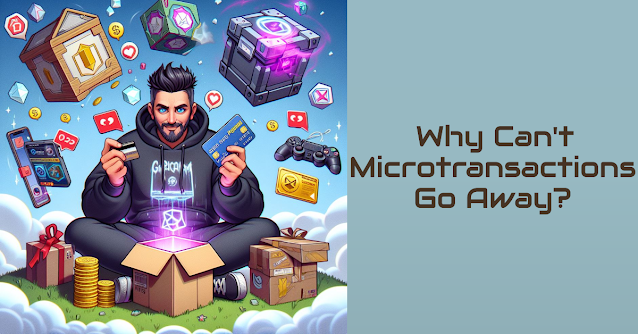Why Can't the Video Game Industry Quit Microtransactions, Despite Gamer Backlash?
Have you ever gotten to the end of a level in your favorite game, only to discover you need to spend real money to unlock the next part? It's a growing trend in the video game industry: microtransactions. But why are they so prevalent, even with all the controversy? Buckle up, gamers, because we're diving into the world of microtransactions and why they're here to stay (for now).
What are Microtransactions
Microtransactions are small in-game purchases that cost real money. They can come in many forms, like:- Virtual currency: used to buy items, character upgrades, or cosmetics within the game.
- Battle Passes: Season passes that grant access to exclusive content and rewards as you play.
- Loot Boxes: Mystery boxes containing random items are often criticized for resembling gambling.
How Do Microtransactions Work
Imagine you're playing an action RPG. You defeat a boss, and... nothing. To access the next zone, you need to buy a key with virtual currency. This virtual currency can be earned slowly by playing or purchased instantly with real money. That's a microtransaction in action.Why Are Microtransactions Bad
Many gamers dislike microtransactions because they feel they:- Nickel and dime players: Force players to spend extra money on top of the initial game purchase.
- Pay 2 Win: Give players who spend more money an unfair advantage.
- Loot boxes resemble to gambling: Encourage addictive spending habits, especially for younger players.
Why Can't We Stop Microtransactions
Here's the harsh reality: microtransactions are incredibly profitable.- Huge Revenue: Games like Fortnite and NBA 2K rake in billions from microtransactions.
- Expensive Development: The cost of creating high-quality games keeps rising. Microtransactions help recoup these costs.
- Live Service Games: Many popular games offer ongoing content updates. Microtransactions help fund this continuous development.
The Future of Microtransactions
The industry is trying to find a balance. Here are some trends:- Battle Passes: Seen as a fairer alternative to loot boxes, they offer a clear path to rewards.
- Regulation: Some countries are implementing laws to protect players, especially children, from predatory practices.
- Cloud Gaming: As cloud gaming grows, subscription models might replace buying games altogether, with microtransactions used for additional content.
In Conclusion, Microtransactions are a controversial but persistent part of the gaming industry. While some gamers despise them, they offer a way for developers to fund expensive projects and keep popular games alive. The future of microtransactions likely lies in regulation, transparency, and finding a way to make them feel like a fair value for players.
What are your thoughts on microtransactions? Do they ruin the gaming experience, or are they a necessary evil? Leave a comment and share your opinion!
About the Writer
Jenny, the tech wiz behind Jenny's Online Blog, loves diving deep into the latest technology trends, uncovering hidden gems in the gaming world, and analyzing the newest movies. When she's not glued to her screen, you might find her tinkering with gadgets or obsessing over the latest sci-fi release.What do you think of this blog? Write down at the COMMENT section below.

No comments:
Post a Comment